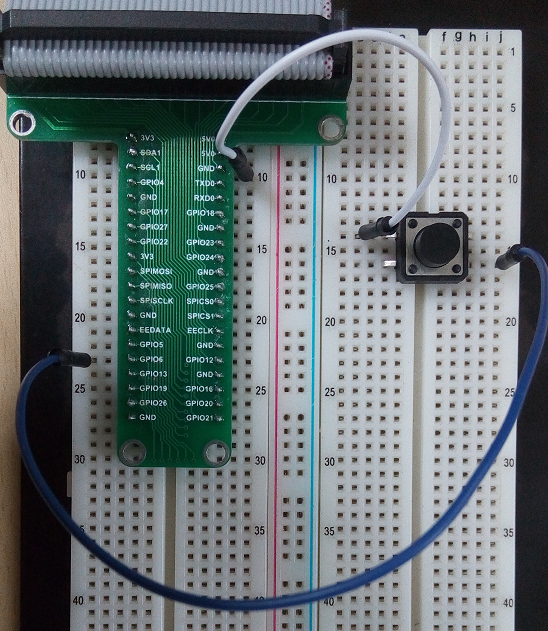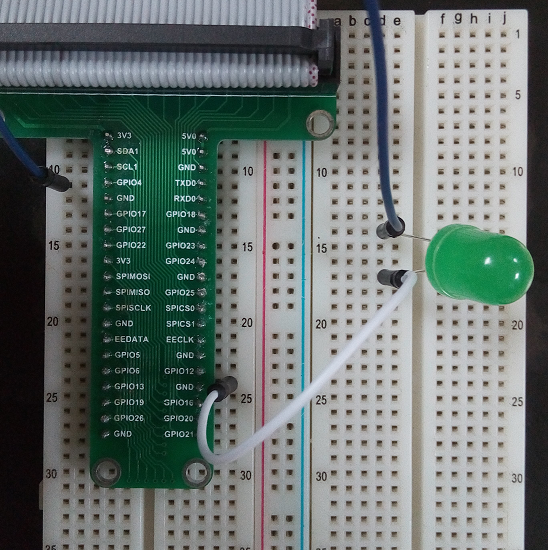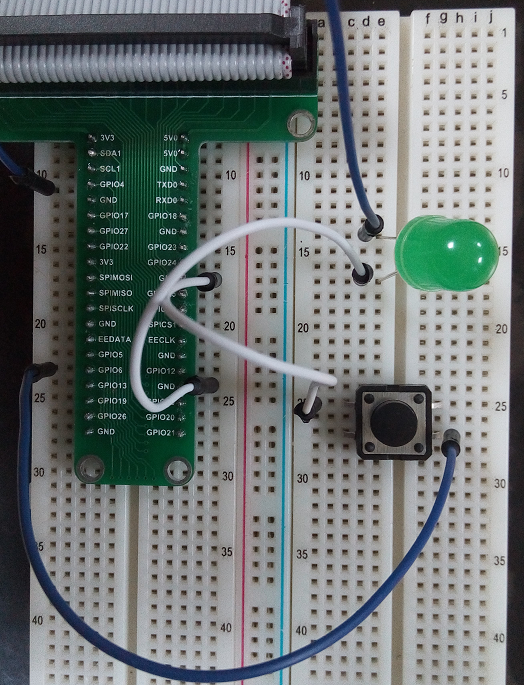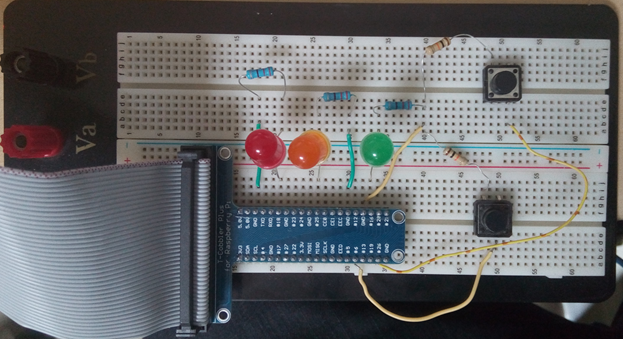Digital Electronics (USIU)
Contents
Digital Electronics
Study of Logic Gates – AND, OR, NOT
In-Lab Exercise 1: Realizing a AND gate
- Step 1 Connect the Circuit as shown in the image below
- Step 2 load the python code into your favorite code editor and copy paste the following code and save it as buttonpressed.py
In our case we used the command line and opened the nano editor and added the following code
#nano buttonpressed.py
import RPi.GPIO as GPIO
import time
#import random
GPIO.setmode(GPIO.BCM)
GPIO.setup(6,GPIO.IN,pull_up_down = GPIO.PUD_UP)
while True:
input = GPIO.input(6)
if input == False:
print ("Button Pressed")
time.sleep(0.2)
In-Lab Exercise 2: Realizing a OR gate
- Step 1 Connect the Circuit as shown in the image below
- Step 2 load the python code into your favorite code editor and copy paste the following code and save it as LightsOn.py
- In our case we used the command line and opened the nano editor and added the following code
#nano LightsOn.py
import RPi.GPIO as GPIO
import time
GPIO.setmode(GPIO.BCM)
GPIO.setwarnings(False)
led = 4
GPIO.setup(led, GPIO.OUT)
GPIO.output(led,1)
time.sleep(0.5)
GPIO.output(led, 0)
time.sleep(0.05)
In-Lab Exercise 3: Realizing a NOT gate
- Step 1 Connect the Circuit as shown in the image below
- Step 2 load the python code into your favorite code editor and copy paste the following code and save it as SwitchLightsOn.py
In our case we used the command line and opened the nano editor and added the following code
#nano SwitchLightsOn.py
import RPi.GPIO as GPIO
import time
GPIO.setmode(GPIO.BCM)
GPIO.setup(6,GPIO.IN,pull_up_down = GPIO.PUD_UP)
led = 4
GPIO.setup(led, GPIO.OUT)
while True:
input = GPIO.input(6)
if input == False:
print ("Button Pressed")
time.sleep(0.2)
GPIO.output(led,1)
time.sleep(0.5)
GPIO.output(led, 0)
time.sleep(0.05)
In-Lab Experiment 1: Realizing AND gate
Wire up the circuit as shown in Figure
- Edit the Program shown in the following (python) code below
(Note: In python the spacing/indentation of the code is important to the code)
import RPi.GPIO as GPIO
import time
GPIO.setmode(GPIO.BCM)
GPIO.setup(6, GPIO.IN, pull_up_down = GPIO.PUD_UP)
GPIO.setup(26, GPIO.IN, pull_up_down = GPIO.PUD_UP)
GPIO.setup(16, GPIO.OUT)
a = 0
b = 0
print "\n2 Input AND Gate"
print "\n"
print "A | B | AB"
print "----------"
print "1 | 1 | 1"
print "1 | 0 | 0"
print "0 | 1 | 0"
print "0 | 0 | 0"
print "\n"
while True:
button1 = GPIO.input(6)
button2 = GPIO.input(26)
if button1 == False:
a = 1
if button2 == False:
b = 1
if (a == 1) and (b == 1):
GPIO.output(16, 1)
else:
GPIO.output(16, 0)
time.sleep(1)
a = 0
b = 0
- Run the Program and Observe LED when
- Switch A is pressed
- Switch B is pressed
- When Both Switch A and B are pressed
- Both Switches A and B are processed simultaneous



